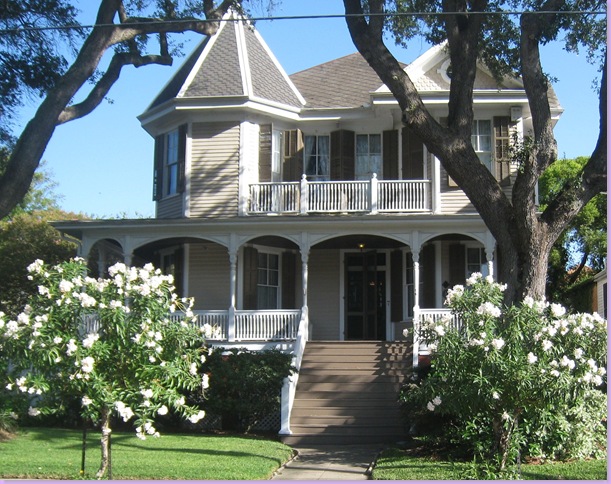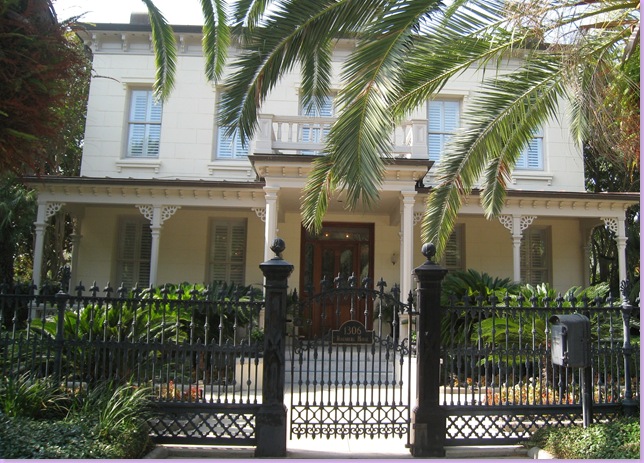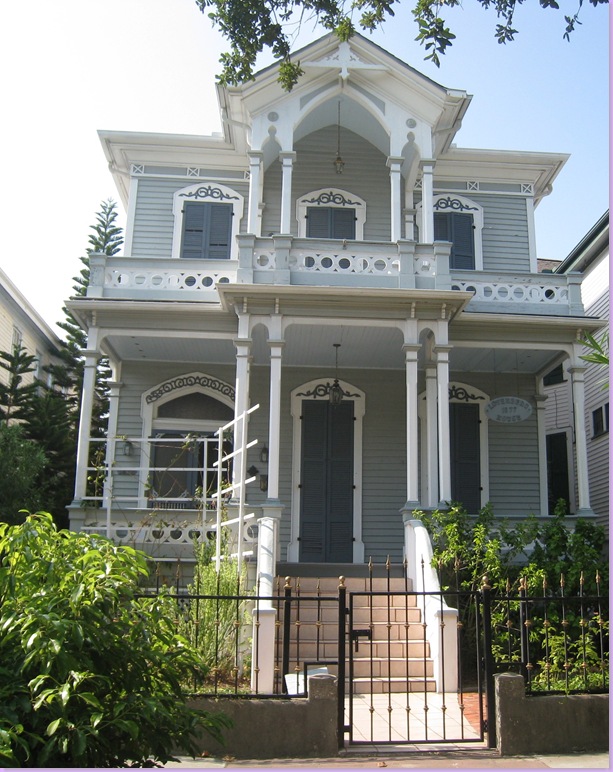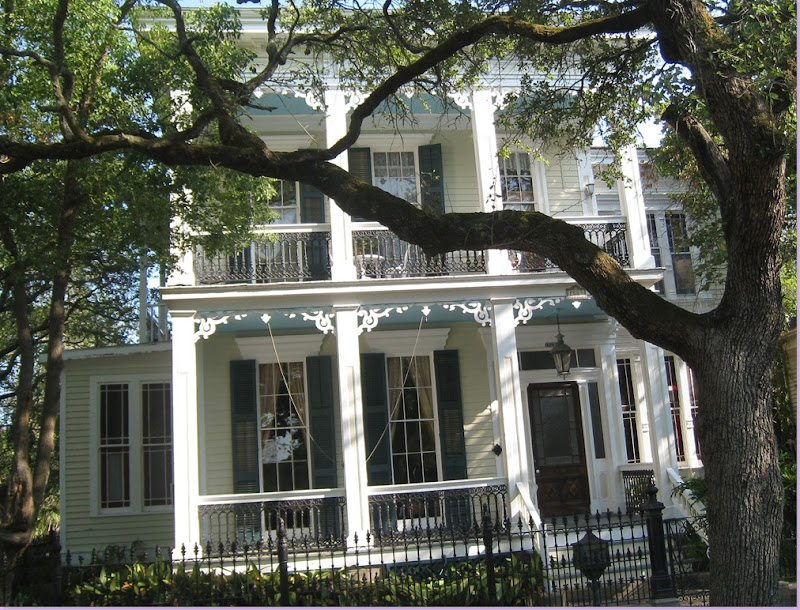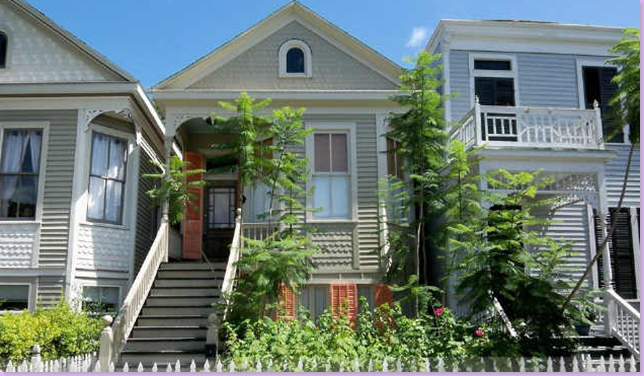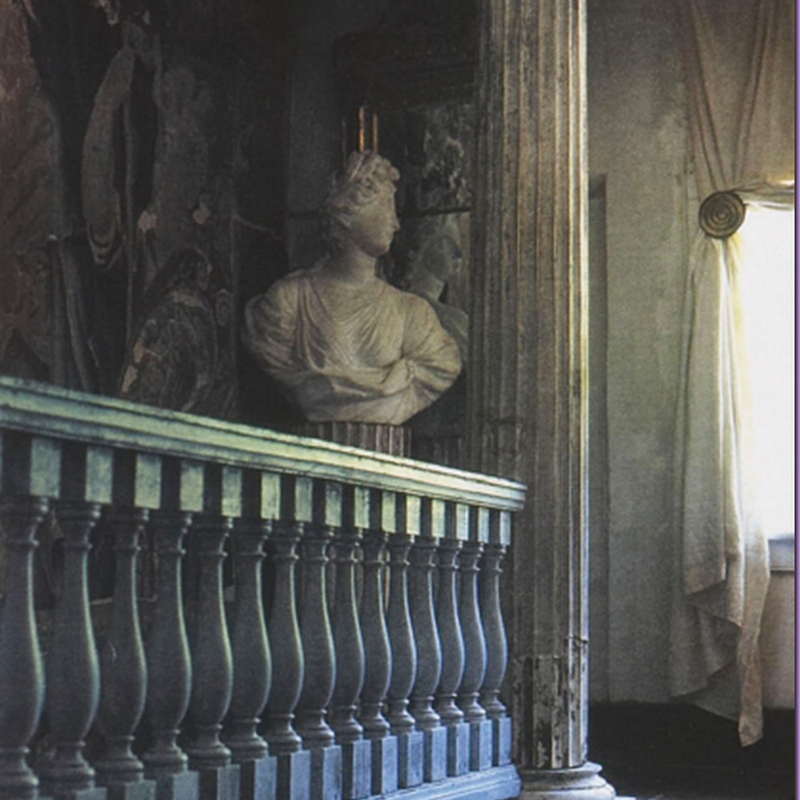 Hurricanes have wiped out two major United States cities, the first, of course was New Orleans, the second? Galveston, Texas. Galveston, a major United States city? At the time The Great Storm of 1900 leveled Galveston taking 6,000 to 8,000 souls in its wake, Galveston was a major city with a large population and a booming port. Houston, its sister city 50 miles west was, by comparison, a small town. The Great Storm was so catastrophic to the Island City that it remains to this day the largest single natural disaster the United States has ever endured. Many books have been written about that fateful night and the Herculean effort it took just to dispose of the victims and bring Galveston back to life. A large seawall was erected to guard against future storm surges and the city, originally at sea level, was raised. Any homes that survived the storm were jacked up and any subsequently built houses were elevated above the ground. (Read an excellent article about the storm and efforts to raise the city here.)
Hurricanes have wiped out two major United States cities, the first, of course was New Orleans, the second? Galveston, Texas. Galveston, a major United States city? At the time The Great Storm of 1900 leveled Galveston taking 6,000 to 8,000 souls in its wake, Galveston was a major city with a large population and a booming port. Houston, its sister city 50 miles west was, by comparison, a small town. The Great Storm was so catastrophic to the Island City that it remains to this day the largest single natural disaster the United States has ever endured. Many books have been written about that fateful night and the Herculean effort it took just to dispose of the victims and bring Galveston back to life. A large seawall was erected to guard against future storm surges and the city, originally at sea level, was raised. Any homes that survived the storm were jacked up and any subsequently built houses were elevated above the ground. (Read an excellent article about the storm and efforts to raise the city here.)
This picture taken the day after the storm shows the massive destruction of Galveston, mostly on its west side.
Galveston never truly recovered from the Great Storm. It's status as a booming city and major port ended with the Great Storm and when Houston built their own Ship Channel in 1914. Galveston, essentially, a large sandbar, has experienced a slow, steady decline the past hundred years, but lately, things are turning around for the island city. It's close proximity to Houston makes it a haven for those seeking second homes on the Gulf of Mexico and tourism increases each year in response to the major attractions being built on the island. Scores of new condominiums, hotels, and beach homes are being built to meet the demand. Things are definitely "hopping" on the island today, but there's another, quieter side to Galveston that is less well known to the beach loving tourists. The older, Southern, genteel way of life in Galveston's historical neighborhoods is a magnet for those who love architecture and the arts .
Thanks to the vibrant and well organized Galveston Historical Foundation, the old neighborhoods of Galveston are being revitalized at a quick pace. Houses that survived the Great Storm and those built soon afterwards, make up two main beautiful areas of town: the East End National Historical Landmark District and the Silk Stocking District (along with the Lost Bayou District). For decades, these Victorian houses languished uninhabited and neglected, decaying and deteriorating. During the past twenty years, that has all changed. The current revitalization push started with the neighboring Strand (another National Historical District.) The Strand is a Victorian business district adjacent to the old port which after being rehabbed is now a vital shopping and eating destination in Galveston, even hosting it's own Mardi Gras each year. After the success of the Strand, Galvestonians and Houstonians with an appreciation for architecture set their sights on the old Victorian painted ladies that fill the two historical districts. Today, though many unrestored houses remain, the refurbished homes are finally starting to outnumber those that are not. Thanks to the dedication and strength of the Galveston Historical Foundation and the East End Historical District Association these wonderful neighborhoods have finally been preserved. Along with the houses, a way of life has been brought back: the corner restaurants and bakeries are thriving again, and life goes on as it did before the Great Storm.
The East End of Galveston is now a National Historic Landmark.
The architecture of Galveston has been written about by many, including esteemed architects themselves. The Historical Districts are held up as models to cities such as Houston whose old neighborhoods have disappeared in the name of progress. The long avenues of the districts with their deep, narrow lots cause a housing density, which along with its front porches encourages a neighborliness that is missing from the suburbs of today. Walking up and down the historical streets, a decidedly Southern, old world atmosphere prevails. With its lush landscaping and 100 + year old live oaks and palm trees, the Victorian painted ladies can barely been seen through the greenery. Mostly two storied, the houses have working shutters that in the summer are mostly kept closed to guard against the sun and it's oppressive heat. For anyone who loves architecture, there can be no greater thrill than gazing at all the varied styles of houses, expertly rehabilitated, primed and painted, ready to face the next 100 years on the island. Today, take a look at a few houses I passed along the way during my stay here on Galveston:
This Romanesque styled house majestically sits on a corner of the East End National Historical District. A listed "survivor," meaning this house was built before the Great Storm, it is protected by the Galveston Historical Foundation.
This Queen Anne has been beautifully rebuilt. Out front are two large flowering oleanders. Galveston is famous for its oleanders which line it's major boulevard, Broadway. Each year, the city celebrates this plant with its Oleander Festival.
This stucco home has a truly magnificent front gate, complete with lanterns that greet callers at curbside.
The Rosenberg House is an Italianate home, a style that was popular on the Island in the late 1880's. Again, a beautiful front gate and iron fence surround this perfectly manicured home.
This is the Lovenberg Home, built in 1877 in the Gothic Revival style. Notice how this home and most of the others are raised above street level. Since this house is a survivor of the Great Storm, it was raised after the hurricane, as all surviving houses were. Those built after the hurricane were designed to be raised. The bottom floor of these raised homes is usually too short to be inhabitable. Notice too, how the shutters are closed - something that many in the historical districts do during the summer's unbearable heat.
The iron plaques that houses surviving the Great Storm proudly wear. It's interesting to think how many will be standing for the 200 year celebration.
A Queen Anne styled Victorian home. Notice the large State of Texas historical marker outside this home. It also bears the "Survivor of the 1900 Great Storm" plaque, visible to the left of the front door, along with two Galveston Historical Foundation plaques visible to the right of the front door. And just to be safe, a flag of the United States flies! Hey, why no Lone Star State of Texas flag?????
This wonderful home from the Victorian age is also a storm survivor. It has been painted to highlight its impressive trim.
This large home is wider than most in the Historical Districts. The lacy "gingerbread" trim above the columns gives this house a feminine quality to it.
While the Historical Districts have many homes that have been revitalized, some still remain left to do. Here is an example of what these homes look like before their makeover. The Galveston Historical Foundation maintains a warehouse full of authentic building supplies, available for use only by owners in the districts.
This yellow painted Greek Revival home, with its charming picket fence, has a lush yard full of palm trees and birds of paradise plants.
This Greek Revival home is a survivor of the storm, it's plaque is plainly visible to the left of the front door. Notice how the porch ceilings are painted blue - a southern tradition said to discourage wasp nests.
This blue beauty is still undergoing transformation. Its widow's walk is being rebuilt on the roof. Notice the delightful scalloped trim under the window tops.
A Gothic Revival brought back to life. The center arch is typical of Gothic Revivals.
A rare three story Romanesque home, with its large covered front porch.
These two Victorian painted ladies seem like twins!

Not all homes in the district are tall two stories, here a Victorian cottage Survivor hides between its towering twin crepe myrtles.
A beautiful cream colored Greek Revival - ready for the elections! This is one of my favorites - its so simple, yet elegant! Notice the matching lanterns on the top and bottom porches.
A large, Queen Anne - patiently waiting it's turn. It looks like a haunted house right now!
The Historical District has small corner stores - some revitalized for the Yuppies, some still open for their long time clients.
This corner restaurant from 1916, is a definite hot spot for district people and vacationers, alike.
A block or two from the homes, stores and coffeehouses line the streets.
Painted pink with a picket fence: small town living at its best!
An 1881 Queen Anne, looking for an owner. By next summer, this house should be in its fully restored glory.
An inside look at the above house. Stripped to the studs, work on the house has stopped until a new owner can be found. Look at this gorgeous staircase set within an arched passageway.
An extra wide home in the Historical District for sale.
The interior of the above house: many owners of these Victorian era homes choose to decorate using Victorian furniture, my absolute least favorite style of design!!! Here, in this beautifully scaled room, antique Victorian furniture has been used.
The Master Bedroom: ouch!
This Survivor, built in 1883, is called The Adolph Frenkel home and is on the market for sale.
Inside the Adolph Frenkel home, the center hall boasts the original tile floors - gorgeous!
This 1867 survivor on Postoffice Street is also for sale.
Again, authentic Victorian furniture fills the home. Does anyone reading this actually like Victorian furniture? If so, explain why in the Comments Section. I'm open to listen and learn!
Another Victorian era home for sale on Galveston Island.
The large hallway with gleaming, polished hardwoods. Notice the front door's side windows.
This smaller Victorian cottage is a Survivor for sale. Long, narrow lots result in skinny homes built close together. These homes are just a little too close for comfort!
Finally! Someone who designed their interiors for today - not for Victorian times. Fresh and beachy looking, perfect for a house that is only a few blocks from the Gulf of Mexico.
The renowned Houston architect and interior designer Ed Eubanks has a second home in the East End National Historical District. Eubanks has an obvious love for the Island and has built and remodeled several homes in Galveston.
No lover of Victorian furniture, Eubanks decorated his home in an eclectic style. Look at the gorgeous and unique turtle on the wall! It was caught in South Texas by Eubank's grandfather.
These photos are from Eubank's web site which were taken from a 2003 article written by Paper City's Laurann Claridge.
A view up the beautifully curving walnut staircase and into the dining room with it's bright blue curtains.
The living room: Eubanks is an obvious lover of clutter! A man after my own heart. I love the scale of the antique mirror!
The dining room with its gorgeous crystal chandelier which Eubanks de-electrified himself. Notice the unusual marble fireplace mantel.
The Eubank's kitchen with a large eat in area. The round marble topped table was a gift and the cabinets came from a John Staub designed home that Eubanks is restoring.
The 1898 Josphine Drouet house in the process of being relocated is driven down Seawall Boulevard! The sign say "Preservation at Work!"
If you plan to visit Galveston, you have a choice of hotel rooms, high rise condominiums, beach houses, or houses in the Historical Districts to rent during your stay. There is also a fair number of bed and breakfasts on the Island. When visiting the island, there is plenty to do besides sitting on the beach with its cooling breezes. Be sure to take time to visit the architectural sites such as Ashton Villa, The Bishop's Palace, and see the Strand, the revitalized Portside shopping district. Or, if you are like me, just take a stroll up and down the narrow streets of the Historical Districts and soak up the small town atmosphere so beautifully preserved on Galveston Island.
Post Title
→Galveston Oh Galveston......
Post URL
→https://porobligacin.blogspot.com/2008/08/galveston-oh-galveston.html
Visit PoR oBliGaCióN for Daily Updated Wedding Dresses Collection

